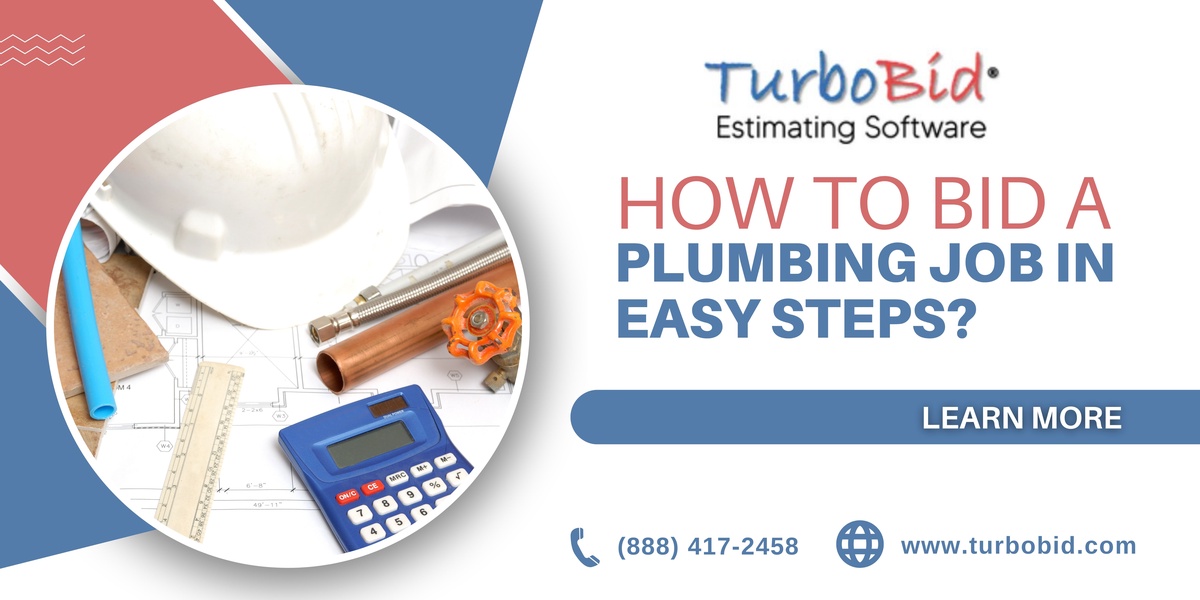As a plumbing business owner, you are aware that acquiring jobs requires effort. You are responsible for finding and securing work for yourself and your team. So, if you are unfamiliar with the bidding process, check out the step-by-step guide to help you bid on the plumbing job.
Bidding Basics
Bidding on a plumbing job is the process of creating and sending in a proposal along with a price quote for a project.
Plumbers may bid on large construction projects for commercial or residential developments or respond to requests for quotes for in-home repairs or smaller projects.
Whether it is a big or small project, you'll likely have to submit a formal proposal with a detailed and accurate quote for your services.
Steps for How To Bid on a Plumbing Project
Bidding on plumbing projects has to be simple. Let's break down what you need to know before, during, and after the proposal.
Gather Project Details: The first step in the bidding process is to gather as much information and details about the project as possible. Some of the steps include analyzing blueprints, speaking with the project owner, and visiting the worksite to gather more information.
Here are some questions you could ask the project owner:
- What is the scope of the project?
- What is the budget for the project?
- What are the conditions like at the site?
- What is the timeline for completing this project?
- Are there any specific fixtures, equipment, or products you prefer me to use?
- How will you assess the quality of my work?
- Will I be required to collaborate with any subcontractors?
Create Quantity Takeoff:
Creating a quantity takeoff is the first step in the bidding process. It helps in estimating the number and cost of materials required to complete the projects.
Typically, most businesses use plumbing bidding software to perform the takeoff as opposed to using spreadsheets.
During this process, carefully study the project blueprints and details to determine the materials you'll need. Make sure you understand any abbreviations or symbols used in the plans.
As you go through the blueprints, fill in the details with the materials you'll need, how much of each, and their respective costs. For example, if you need 20 feet of copper pipes and know suppliers charge by the foot, you'd include:
Find Reliable Suppliers:
Once you have created and partially completed your quantity takeoff, you'll need to contact the supplier from which you want to purchase your materials. Consider contacting several suppliers to ensure you get the best deal. Ensure that you choose a supplier that has a good reputation and will deliver your materials on time if you win the job.
Here are some tips that will help you find a great material supplier:
- Check with others in the plumbing community about which supplier they prefer.
- Check online reviews.
- Check the quality of materials.
- Look for suppliers that have good after-sales service.
- Establish a good relationship with the supplier.
Request and Evaluate Material Quotes
Once you have identified your suppliers, get quotes for the materials you need. Ensure that you remain specific about what you will use the material for, how much you'll need, and when you'll need it.
After receiving the quotes, you need to evaluate which supplier offers you the best deal. Don't be afraid to use multiple suppliers or see if there is room for negotiation.
Once you have determined the materials you want to buy and their prices, plug that information into your quantity takeoff to determine the total price.
Calculate Labor and Equipment Costs
It is important to consider not only the cost of materials but also the cost of labor and equipment when creating a bid.
If you charge for labor hourly, estimate the number of hours the project will take and calculate the total cost accordingly. Also, consider whether you will need extra compensation for overtime work.
You can also set a flat fee for your services, regardless of the hours worked. Please provide details on the proposed fee. If needed, obtain quotes for any specialized equipment that may be required and include these costs in your proposal.
Write Proposal:
Once you have calculated all the costs, you can start writing the proposal. Here is the breakdown that you can add to your proposal.
- Cover Page
- Executive summary
- Scope of work
- Timeline
- Technical approach
- Qualifications
- Quality assurance
- Terms and conditions
Submit a bid:
After that, you create the proposal, you can submit bids via email to the project owner. Sometimes, the project owner may contact you with specific questions about the bid to confirm your scope of work and costs.
Connect with TurboBid if you are looking for a reliable partner that can help with the estimation process. Our software helps plumbing contractors to complete their bids accurately and quickly time so that they can focus on other tasks.
Bidding Software vs. Manual Bidding
Many plumbers and contractors use bidding software, which can make the process smoother. Though the software cannot write proposals itself, it can help to calculate costs, keep track of projects, and measure the project.
Do remember that there are various types of bidding software available so go with that is suitable for plumbers.
If you are interested in very small projects and don't require detailed bids, you can go with a manual approach.
Also Read: 3 Reasons Why You Need Plumbing Estimation Software


No comments yet